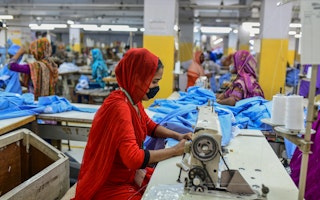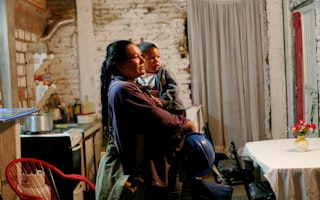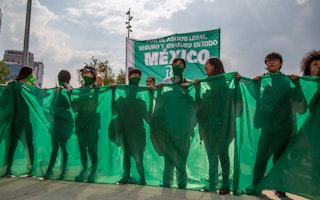After the Pandemic, Rebuild for Gender Justice
By Ginette Azcona & Antra Bhatt

Twenty-five years ago, the Beijing Platform for Action [PDF] marked a historic step for gender equality. The declaration was intended to be a blueprint for advancing women’s rights worldwide and called upon stakeholders to invest in eliminating barriers in health, nutrition, education, and other related domains that prevent women and girls from realizing their full potential. However, in the year 2020, as a global and deadly pandemic rage on, the hard-earned progress has eroded.
Currently, over 52 million people globally had been infected with COVID-19, and over 1.2 million have died from the virus. Rich and poor countries alike are struggling to keep their citizens safe and secure. Meanwhile, as is confirmed by From Insights to Action: Gender Equality in the Wake of COVID-19 [PDF], a new report from UN Women, the economic downturn accompanying the pandemic is pushing millions of people into extreme poverty; and women and girls are taking the hardest hit. By the end of this year, a shocking 13 percent of the world’s women and girls—469 million people—will be living in extreme poverty. And 49 million of them will be impoverished specifically because of COVID-19.
These new forecasts signal a worrying reversal of decades of progress in the eradication of poverty and inequality. Although extreme poverty rates had been declining steadily since the late 1990s, as a result of COVID-19, the number of women living on less than $1.90 a day is now projected to increase by 11 percent between 2019 and 2020. Indeed, our report shows the number of women and girls living in extreme poverty will not revert to pre-pandemic levels until 2030.
Among the general population over the age of 15, poverty rates for women and girls are 1 percentage points higher than for men and boys (10 percent vs. 9 percent, respectively). Yet gender poverty gaps are deepest for women in their prime reproductive years. Globally, poverty rates for women are two percentage points higher than for men aged 25-34 (12 percent vs. 10 percent, respectively). This data reveals that women’s risk of falling into poverty is most severe when they are most likely to have young children in the home to care for, as well as in late adulthood. Women’s increased poverty at these stages is not coincidental. Over the course of their lives, women are more likely to have prioritized family obligations over paid work, which can adversely affect their incomes in prime working years. This also has a ripple effect on their income security in old age. The pandemic is expected to further worsen these gaps.
Unsurprisingly, there are marked regional affects, as well. Today, 55 percent of the world’s poor women reside in sub-Saharan Africa, a share that is expected to grow to 63 percent by 2030. However, and because of the pandemic, Central and Southern Asia, a region that had made significant progress towards poverty eradication, will now comprise 32 percent of the world’s poor women, instead of the previously expected 29 percent. Further, a gender-poverty gap among those aged 25–34 currently exists in 75 of 131 low- and middle-income countries; and only eight of these countries (Bhutan, Costa Rica, Dominican Republic, Ecuador, Gabon, Guyana, Indonesia, and Nicaragua) are expected to close this gap by 2030. Unless policies are put in place immediately to prevent women’s further impoverishment, an additional 59 countries will need up to 70 years to close their gender poverty gaps.
Despite the clear gendered implications of outbreaks, policy response and recovery efforts have thus far tended to ignore the needs of women and girls. We need to do better. The new data commissioned by UN Women and the United Nations Development Programme estimates the cumulative cost of lifting the world out of extreme poverty by 2030 to be about $2.3 trillion in purchasing power parity terms, or just 0.14 percent of global gross domestic product. The comparative cost of closing the gender poverty gap? Just $49 billion.
Given that the factors driving the current rise in global poverty include the global economic downturn, job losses, and the lack of safety nets, policy solutions may seem obvious. But these must be gender-inclusive and gender-specific if the world is to be brought back on track to eradicate extreme poverty. Our new report estimates that by 2030, over 150 million women and girls could be lifted out of poverty by implementing a comprehensive strategy focused on improving access to education, family planning, fair and equal wages, and expanding welfare transfers.
Now, in the spirit of the Beijing Platform, is the time to make these investments and build equal, inclusive, and resilient societies.
UN Women is a grantee of the Open Society Foundations.
Ginette Azcona is the lead data and statistics researcher for global reports at UN Women.
Antra Bhatt is a statistics specialist at UN Women.


